Learn about ESRB and PEGI video game ranking standards
The rating comes with every video game. Like movies, video games get a rating so you know if they're right for kids. However, if you're not too familiar with video games, you may find video game ratings a bit confusing.
Most video game ratings are just a collection of digits. This article provides guidance on ESRB and PEGI ratings, which explains how the video game ranking works, provides a bit of background on the companies responsible and explains how you can make use of them.
ESRB and PEGI - the 2 most popular game ranking standards
- North America: ESRB
- Europe: PEGI
- Rate video games in other countries
- Explain the ESRB ranking criteria
- Describe the ESRB content
- Explain about PEGI ratings
- Description of PEGI content
North America: ESRB

ESRB, short for Entertainment Software Rating Board, provides video game ranking services to the United States, Canada and Mexico. ESRB was founded in 1994, and the circumstances leading to this formation are quite interesting.
Before ESRB, the ranking of video games was up to console manufacturers. At the time, Nintendo didn't rate games, but had a reputation for censoring games to make them family friendly. Meanwhile, Sega has its own rating system for consoles.
As video game graphics cards became more and more popular, parents and the US government began to feel concerned. Two popular names at the time: Mortal Kombat, an extremely violent fighting game and Night Trap, a game with full-motion video (completely dynamic), in which you have to prevent teenage girls from being abducted. , became the focus of controversy.
Therefore, the US government held hearings on the impact of adult games on society. The government has issued an ultimatum to the gaming industry: A universal ranking system must be introduced within a year, or the government will do it in person.
Therefore, in 1994, ESRB was born. Since then, it has become a video game ranking system in North America. Unlike many other countries, ESRB ratings are not legally enforced. Instead, it adjusts. All console manufacturers require that games have an ESRB rating in order to appear on their systems and that unrated games will not be included in the game's "store".
Europe: PEGI
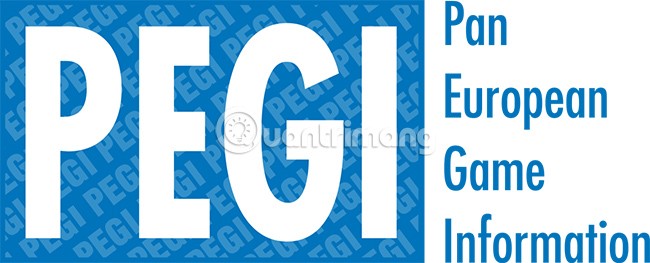
PEGI, short for Pan European Game Information, is the standard for ranking video games in most European countries. PEGI was launched in 2003 and replaces the various game rating systems that individual countries have used before. As of the time of this writing, 39 countries have used PEGI to rate games.
PEGI is an example of standardization across countries in the European Union. The European Commission has announced its support for PEGI. Some countries are required to have an age mark on the game, while others accept it as a de facto standard, but do not support specific laws.
Rate video games in other countries
As you would expect, other regions of the world also have their own video game ranking system. It is not possible to include all of them in this article, but they mostly follow the same pattern. For example, Japan has CERO (Computer Entertainment Rating Organization) that assigns an alphabetical ranking to games.
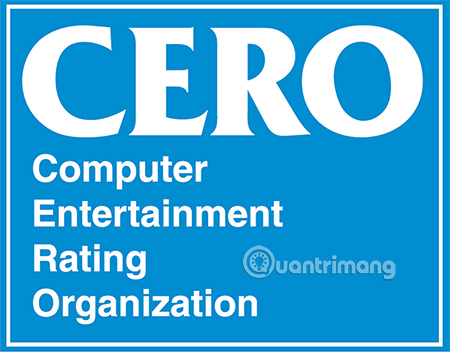
However, Australia is particularly notable for enacting stricter censorship laws compared to other Western countries. The Australian Classification Board didn't support the 18+ ranking of video games until 2013. Some games were never released in Australia, while others had to go through the process. Relatively much editing.
For example, in Fallout 3, real-world synthetic drugs were changed to Med-X to comply with Australian standards. It is illegal to sell any game that has not been classified in Australia.
Explain the ESRB ranking criteria
Now, the article will look at the companies behind the above ranking criteria. First, take a look at the actual video game ratings you'll see in North America.
ESRB uses 7 different ratings for games. 4 of these ratings are very popular, while the other 2 options are quite rare and the last ranking type is only "reserve".
- Early Childhood (EC) is the lowest ranking. It denotes games for child audiences. Therefore, these games have no objectionable content and may not be very interesting to the general audience, because they are intended for young children. This rating is not very popular. Examples of games include Dora the Explorer: Dance to the Rescue and Bubble Guppies.
- Everyone (E) is the base rating. Games with this rating are 'suitable for all ages'. Before 1998, this rank was called Kids to Adults (KA). E-rated games include Mario Kart 8 Deluxe and Rocket League.
- Everyone 10+ (E10 +) denotes games suitable for children 10 and older. Compared to an E-rated game, these games may contain some content that is more provocative, humorous or violent. Notably, this is the only rating that ESRB has added since its inception. Some games with this rating are Super Smash Bros. Ultimate and Kingdom Hearts III.
- Teen (T) is the next level. This rating is suitable for players aged 13 and up. Titles can have sexually suggestive content, stronger language, and gore-related scenes. You will find Teen ratings on games like Apex Legends and Fortnite.
- Mature (M) is the 'normal' rating at the highest. M-rated games are considered suitable for people 17 and older. Compared to Teen games, they can contain more violent scenes, stronger sexual content, even nudity and pretty strong language. Some game stores don't sell M-rated games to minors, but this is not a legal standard. Examples of M-rated titles include Red Dead Redemption II and Assassin's Creed Odyssey.
- Adults Only (AO) is an ESRB ranking of 18+. This rating applies to games with graphic sexual content or games that allow gambling with real money. However, it is really a lame assessment. There are no major console manufacturers that allow AO games on their system and very few retailers sell AO games in their game 'store'.
Therefore, only a handful of games receive this rating. Most AO games receive this rating due to their heavy sexual content. Publishers will change their game to avoid being ranked at this level, because it's basically like a death sentence. Games with AO ratings include Seduce Me and Ef: A Fairy Tale of the Two.
- Rating Pending (RP) is just a 'reservation'. It appears with advertisements for unrated games.
Describe the ESRB content
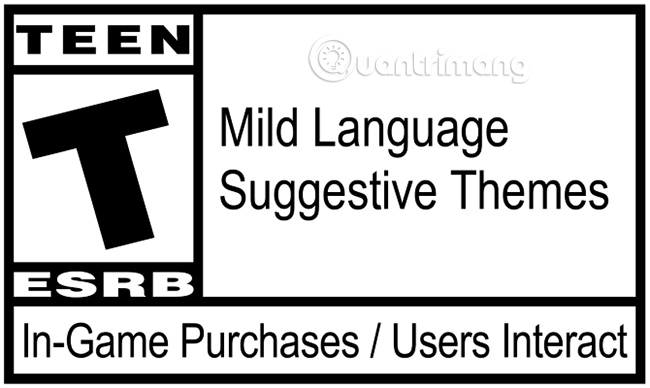
Ranking is usually found on the front of the game box, while the back has more details. ESRB has several dozen content descriptions, providing you with information about the types of offensive content in the game. Most of these descriptions are self-explanatory (such as Blood - related to gore scenes or Use of Drugs - there are scenes of illegal use), and the article will explain a few. Description can be confusing here:
- Comic Mischief: Characters slide on a banana peel, slap each other, etc.
- Crude Humor: Generally speaking of 'bathroom humor' such as farting.
- Lyrics: Music in the game contains language or other suggestive content.
- Simulated Gambling: Card game with virtual money.
- Suggestive Themes: Games often have characters in delicate clothes or the like.
Finally, ESRB now has information about 'Interactive Elements' at the bottom of the rankings. These include In-Game Purchases if the game allows you to spend real money on loot boxes or similar items and Users Interact in games where you can talk and share. Share content with others. ESRB does not rate online parts of the game because it cannot predict how people will act online.
For a complete list of descriptions and information, see the ESRB ranking guide at https://www.esrb.org/ratings-guide/. You can also search for any game on the ESRB website to see a summary of its objectionable factors.
Explain about PEGI ratings
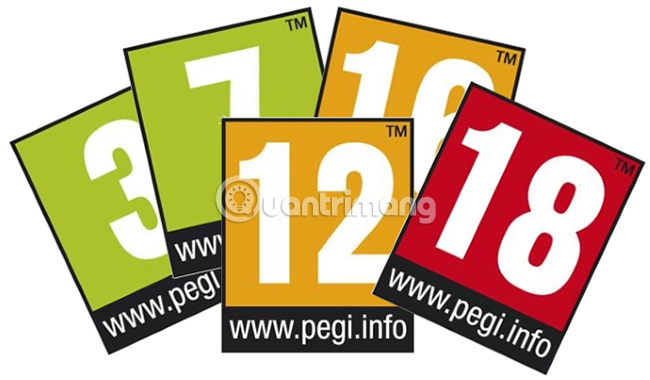
PEGI uses a similar setting to ESRB with a total of 5 rating levels. However, there are some minor differences in the ratings, and there, there is no 'useless' rating like AO.
- PEGI 3 is the lowest ranking and suitable for all ages. Unlike EC ratings, games with this rating do not necessarily target preschoolers. These games should not contain things that may scare children, but a light, humorous 'violence' is still acceptable. An example of this rating is Yoshi from Crafted World.
- PEGI 7 marks games suitable for ages 7 and up. Like PEGI 3, PEGI 7 may contain some violence or mild scary situations. Pokémon Ultra Sun is an example of the game PEGI 7.
- PEGI 12 has an orange symbol. These games are for players 12 and older. They may contain more realistic scenes of violence, references to sex, small gambling, horror elements and some 'rude' languages. An example of this type of game is Shadow of the Colossus.
- PEGI 16 , also orange, denotes games for players 16 and older. Compared to the PEGI 12 titles, these games may contain stronger scenes involving banned substances, violence, sexuality and language. Battlefield V falls in this rating.
- PEGI 18 is the strongest ranking and is red. These games are only for players 18 and older. They contain extreme violence, the use of illegal substances, and explicit sexual activity. Metro: Exodus is an example of the game PEGI 18.
Description of PEGI content
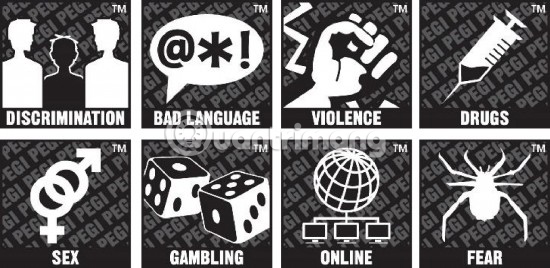
Like ESRB, PEGI also complements its main rankings with content descriptions. They appear as icons on the back of the game box. Although there are few descriptions of PEGI compared to ESRB, they represent different levels of content based on rankings.
For example, Bad Language's description can appear on games rated 12 through 18. But while PEGI 12 will contain only a few gentle swear words, a PEGI 18 game may contain statements. 'heavier'. In addition, descriptions are limited to specific ratings, so you can't see Drugs description on a PEGI 7 game.
Like ESRB, PEGI recently added the In-Game Purchases icon to indicate games that allow you to purchase downloadable content for real money.
The article gives readers a full overview of the ESRB and PEGI video game rating systems. By now, you know what these companies are all about, what the ratings mean, and how to check the content descriptions for more details about each individual game.
It was interesting to see comparative ratings across regions. For example, the Celeste game receives an E10 + rating in the US, but is only considered to be PEGI 7 in Europe. PEGI also does not point out some of the same content as ESRB, such as crude humor (the humor is a bit crude).
You should read it
- How to optimize video game graphics settings
- 6 great features of Game Bar in Windows 10
- The 5 best video game emulators on iOS
- 9 tips to increase YouTube video rankings on Google
- How to turn off Game DVR on Windows 10
- The Chinese video game industry is making a splash thanks to the corona virus
- How to change the Windows 10 Game DVR recording time
- How to Record Video Gameplay With No Capture Card
May be interested
- What is Roku? How does Roku work?
 thanks to streaming devices like roku, eliminating the need for cable tv services has never been easier. once you do, you will never regret your decision.
thanks to streaming devices like roku, eliminating the need for cable tv services has never been easier. once you do, you will never regret your decision. - What is kerning?
 have you ever heard about the term kerning in placement and typography in print? do you know what it means? let's find out in the following article.
have you ever heard about the term kerning in placement and typography in print? do you know what it means? let's find out in the following article. - What is the root directory?
 the root directory, also called the root directory or sometimes is simply a root, of any partition is the highest directory in the hierarchy.
the root directory, also called the root directory or sometimes is simply a root, of any partition is the highest directory in the hierarchy. - 9 online acronyms make you dumb
 if you've ever been puzzled when you see your kid commenting words like 'imo,' 'tbh,' 'tl; dr' or seeing icymi character sequences on some foreign post, read the article below to understand it all. the meaning of these acronyms.
if you've ever been puzzled when you see your kid commenting words like 'imo,' 'tbh,' 'tl; dr' or seeing icymi character sequences on some foreign post, read the article below to understand it all. the meaning of these acronyms. - What is FSB?
 the frontside bus is a communication interface that acts as the main link between the cpu and the system memory.
the frontside bus is a communication interface that acts as the main link between the cpu and the system memory. - What is Low-Code? And how does it work?
 the low-code design tool allows users to create complex programs without much coding experience. so what is low-code? how does it work? let's find out in the following article.
the low-code design tool allows users to create complex programs without much coding experience. so what is low-code? how does it work? let's find out in the following article.
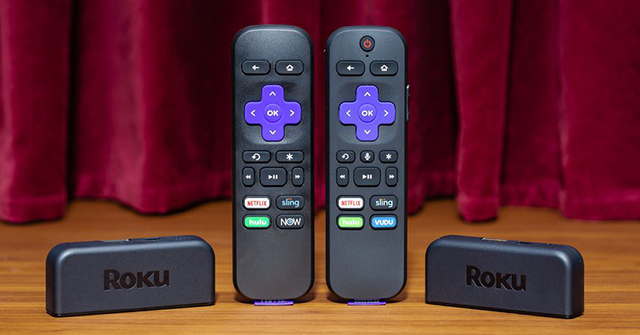





 50 best video games of all time
50 best video games of all time Learn video recording standards with smartphones
Learn video recording standards with smartphones Learn about new HEVC / H.265 video standards
Learn about new HEVC / H.265 video standards Instructions for filming and taking game screen shots in Windows 10
Instructions for filming and taking game screen shots in Windows 10 How to optimize video game graphics settings
How to optimize video game graphics settings